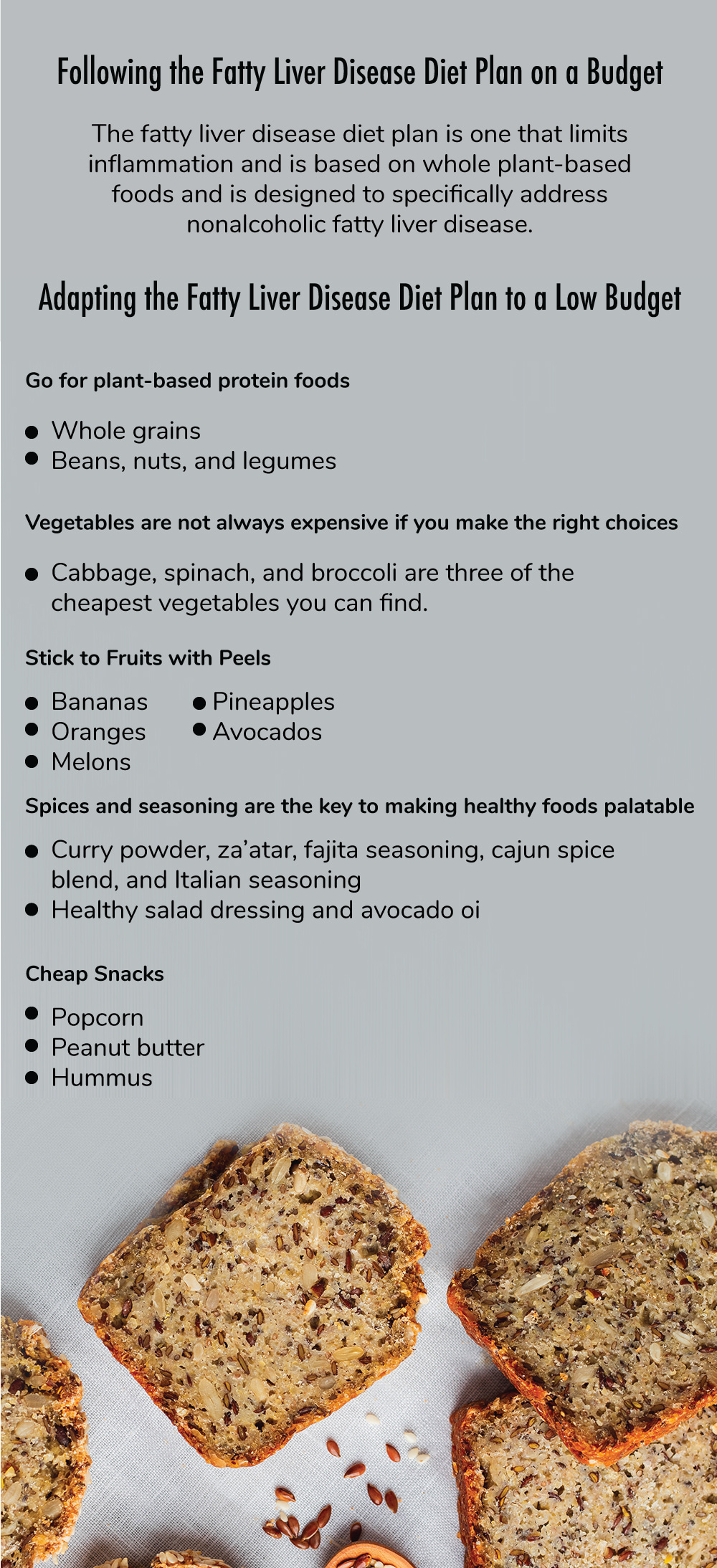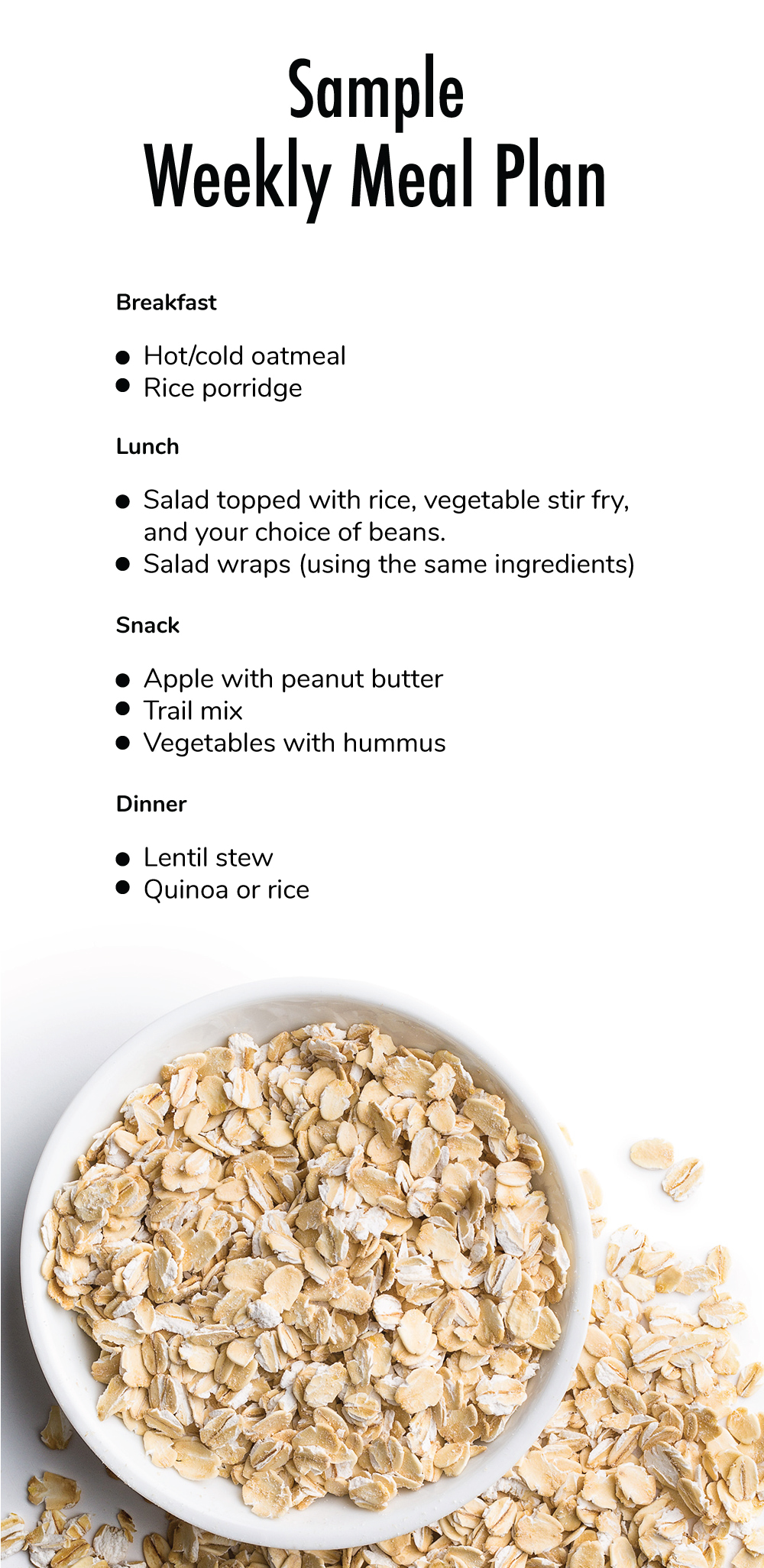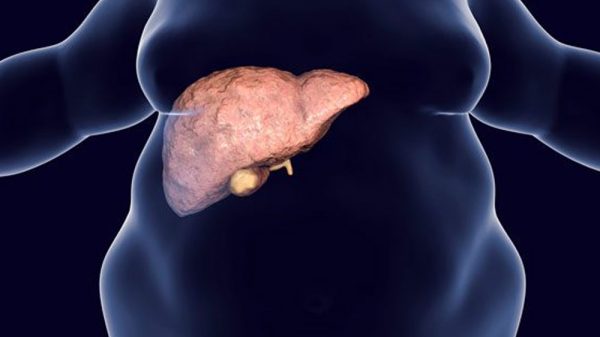If you’ve been diagnosed with fatty liver disease, you may have learned that changing your diet is critical to reversing it. But completely changing the way you eat can be overwhelming and, in many cases, very expensive. Budget meal planning is the way to solve this problem. If you’re stumped when it comes to eating healthy on a budget, keep reading to find out tips and hacks for eating liver-friendly foods without breaking the bank.
Overview of the Fatty Liver Disease Diet Plan
Before diving into tips, let’s first go over the fundamentals of the fatty liver disease diet plan.
What Does the Fatty Liver Disease Diet Plan Do?
The fatty liver disease diet plan is one that limits inflammation and is based on whole plant-based foods and is designed to specifically address nonalcoholic fatty liver disease.
Interestingly, the fatty liver disease diet plan is also applicable to many risk factors and co-occurring conditions like obesity, diabetes, and high cholesterol. This diet plan is designed to help you cure certain associated conditions- such as high cholesterol and insulin resistance – while also lowering liver inflammation and helping reduce the fat content in the liver.
Following the fatty liver disease diet plan is crucial for preventing the progression of fatty liver disease to nonalcoholic steatohepatitis, which could potentially lead to fibrosis, or the development of scar tissue in the liver. If this is left untreated, liver cirrhosis can develop, which is the accumulation of hard scar tissue that impeded normal hepatic function. Liver cirrhosis increases the risk of developing liver cancer and liver failure.
The liver is a highly resilient organ with numerous repair mechanisms. The fatty liver disease diet plan takes advantage of the liver’s strengths and supports healing. Intervening early in liver disease is critical to reversing it.
What Is Included in the Fatty Liver Disease Diet Plan?
The vitamins, minerals, and antioxidants in fruits in veggies are critical to the fatty liver disease diet plan. Produce is packed with antioxidants that fight against inflammation, promote healing, and encourage the reversal of fatty liver disease. Whole grains, nuts, and legumes provide fiber, protein, and antioxidants, as well as healthy fats that lower inflammation. Smaller amounts of lean, high-quality meats and low-fat dairy products provide protein that supports liver health.
Overall, the fatty liver disease diet plan focuses on whole, natural, foods that support the body’s natural healing processes to reverse liver damage and inflammation. The diet plan eliminates inflammatory foods that exacerbate fatty liver disease and related conditions. Examples of these unhealthy foods include candy, cookies, cake, soda, pizza, fast food, and other packaged foods. This can be overwhelming since most of the grocery store is filled with these processed items.

Adapting the Fatty Liver Disease Diet Plan to a Low Budget
When aiming to eat healthy, good food on a tight budget, going primarily plant-based is the way to go. A common misconception is that following a plant-based diet on a budget is nearly impossible, when in fact, it is the most effective way to eat healthy, cheap food. Finding high-quality plant-based foods can help you save money, it just requires a bit of strategy.
Finding high-quality meat, on the other hand, is difficult. Grabbing a $4 package of sliced lunch meat will land you an unhealthy, high-sodium, and high-fat snack that’s packed with preservatives; never mind the protein. Buying lean cuts of fresh, high-quality, grass-fed meat costs at least twice as much as packaged and preserved meats, for a relatively small quantity. This is far from cost-effective, and there are better ways to spend your dollars to eat healthy.
The Cheapest Source of Protein Is NOT Meat or Dairy
This may be a surprise, but if you’re looking for dietary protein that is both healthy and cheap, meat or dairy is not the way to go. Plant-based products afford many options for cheap, high-protein foods.
Beans are hands down the cheapest source of protein and buying in bulk will be your friend. To get the most bang for your buck, aim for dried beans. Lentils are excellent options for protein, fiber, and nutrients. They also require no soaking, simply rinsing before cooking. Other beans to buy in bulk include pinto beans, black beans, kidney beans, and white beans.
The one thing to keep in mind here is that beans cannot serve as your only source of protein throughout the day. Though quantity-wise, beans may provide more than enough protein, it’s important to make sure that you’re also eating a couple other plant-based protein sources, like nuts and whole grains. Though more expensive than dried beans, whole grains, and nuts, soy protein is a plant-based source of protein that provides all essential amino acids in optimal ratios. You can find soy protein in the form of tofu or tempeh.
The reason for eating several plant-based protein sources is to ensure that you are getting a complete profile of essential amino acids. Amino acids are the basic molecular compounds that make up protein, and they serve an integral role in nearly all biological processes. Certain amino acids are categorized as essential because humans must get these amino acids from dietary sources. The nutritionally essential amino acids are histidine, threonine, methionine, lysine, leucine, isoleucine, valine, phenylalanine, and tryptophan.
Nonessential amino acids, on the other hand, can be synthesized in the body. Conditionally essential amino acids lie somewhere in between; when stressed or injured, we may consume higher amounts of amino acids and require higher intake than normal of certain amino acids.
Vegetables Are Not as Expensive as You Think
Vegetables are not always expensive if you make the right choices. Sweet potatoes and regular potatoes are hearty options that can provide complex carbohydrates, vitamins, minerals, and fiber. Try eating the skin or using the skin in another recipe to make sure that your dollar is stretched as far as possible.
Cabbage, spinach, and broccoli are three of the cheapest vegetables you can find. When buying these vegetables, buy them by the bunch instead of prewashed and packaged. Though prewashed, chopped, and packaged kale may be very convenient, it will cost a little extra.
There are a few things to keep in mind when it comes to produce. Keep in mind that the cost of vegetables will vary based on what is seasonal and local. To get local foods, try to stock up on fresh produce at farmers’ markets or local farms. Unless you get a really good deal and it’s available, don’t worry about buying organic produce. Organic foods may be overpriced, so just make sure you thoroughly rinse produce before consuming
Stick to Fruits with Peels
Fruits like blueberries, raspberries, and blackberries that lack tough skins tend to be expensive and they go bad quickly. Stick to fruits with thicker protective peals, like bananas, oranges, melons, pineapples, and avocados. Apples, though they don’t have the same protective peel, tend to last a long time as well. These heartier fruits don’t perish as quickly, especially when stored in the refrigerator.
A helpful trick is peeling and throwing bananas in the freezer, even when they have become overly ripe. Frozen bananas can be added to smoothies and shakes as a natural, creamy sweetener.
Flavor Is Critical
If there’s one area to allocate a few more dollars towards, it would be seasoning. Spices and seasoning are the key to making healthy foods and bland starches palatable so that we want to keep eating them. Having a few flavor combinations up your sleeve will help you mix up the flavor profiles to keep your meals interesting.
If you like spice, salsa and hot sauce are easy but delicious ways to season foods.
You can also find spice mixes that you like because they can be used to season everything. Great examples include:
- Curry powder: A traditionally Asian blend containing turmeric, ginger, cumin, coriander, and chilies.
- Za’atar: A Middle-Eastern seasoning containing sumac and sesame.
- Fajita seasoning: This Mexican spice blend that contains garlic, chili, cumin, paprika, onion powder, and cayenne and can be used to season tacos, fajitas, and vegetables.
- Cajun spice blend: A taste characteristic of Louisiana and often includes onion powder, red pepper flakes, thyme, paprika, garlic powder, and oregano.
- Italian seasoning: A blend of herbs including basil, oregano, red pepper flakes, garlic powder, and a dash of nutmeg.
Though you could create your own spice mixes at home, buying pre-made spice blends works too. When buying pre-made spice blends, just make sure to watch out for sodium. A little bit of salt is often necessary to help bring out the flavor of different spices, but too much salt can contribute to metabolic disease by raising your blood pressure, taxing the kidneys, and increasing water retention. If a spice blend is high in salt, simply use it sparingly, and it should last a long time.
Furthermore, spices are also excellent options to have on hand when you are in a pinch and don’t have many vegetables. Though fresh produce is always the best when available, sometimes it can be hard to find at reasonable prices. In this case, dried herbs and spices are long-lasting substitutes that provide many of the same antioxidants and anti-inflammatory agents as vegetables do. Dried herbs and spices with antioxidant activity include dill, basil, rosemary, and turmeric.
Salad Dressings
Another flavor-enhancing method is having healthy salad dressings on hand. Try to stick to dressings that contain oils like olive oil and apple cider vinegar. You can even make your own salad dressing by combining olive oil, apple cider vinegar, salt, agave nectar, and garlic powder. The resulting dressing is a savory vinaigrette that works on a variety of salads and vegetables. If you’re craving a creamier dressing, try to use avocado or coconut milk as a replacement for cream or cheese-based dressings which contain high amounts of saturated fat and salt.
Cooking Oil
Finally, invest in a bottle of high-quality avocado oil for high-heat cooking. Many people are accustomed to using olive oil for cooking. At high heats, however, the fatty acid chains in olive oil are damaged and the fat molecules change form. The fat in avocado oil is resistant to high heats, so when cooking, you don’t have to worry about damaging the fats. Just remember, be sure to use the oil very sparingly to enhance taste and flavor and use water as a substitute when possible.
The bottom line here is that having a variety of delicious flavors to season your food will increase the probability that you will stick to buying cheap, healthy options. Let’s be real – eating kale, potato, and lentils plain is just not appealing. So, it’s important to pump of the flavor in the healthiest way possible.
Cheap Snacks
Having healthy, inexpensive snacks on your grocery list helps you save money and time.
Popcorn
When making it yourself, popcorn takes the cake as a cheap, healthy food. You can ditch those pre-packaged, microwaveable bags of kernels drenched in butter. Instead, you can buy dry corn kernels in bulk.
To prepare popcorn yourself, simply find the largest pot that you have and place it on the stovetop. Add corn kernels until they cover the bottom of the pot, and drizzle a little oil (in some cases, water may work too) to coat them. Cover the pot and turn up the heat. As soon as you hear the first kernel pop, begin swirling the pot over the stove to evenly distribute the heat and kernels. After about five minutes, you will have a huge pot of freshly popped popcorn.
This whole-grain snack is packed with fiber and nutrients and is versatile when it comes to flavor. Try seasoning with simply salt and pepper or add a little chili powder or curry for an extra punch of spice. Additionally, you can easily save leftover popcorn in a sealed bag to snack on later.
Peanut Butter
Peanut butter is a cheap option for all kinds of snacks. When looking at peanut butter options, check the ingredients label to make sure it doesn’t contain any added sugar or hydrogenated oils. Peanut butter made simply of peanuts provides fiber, protein, healthy fats, and even the antioxidant resveratrol. Try slathering peanut butter on whole-grain bread for a quick snack or lunch. Celery, peanut butter, and raisins (ants on a log) is a classic, delicious, and nutritious snack. Apples and peanut butter are also an easy and delicious pairing.
Hummus
When it comes to hummus, try making your own instead of buying pre-made hummus. Many packaged hummus brands tend to be overpriced and don’t quite deliver, flavor-wise. Though hummus is definitely less convenient to make than popcorn, it is a protein-packed, fiber-filled snack that affords the opportunity to eat raw vegetables. Some hummus recipes are more complex, but some are simply made of chickpeas, garlic, and olive oil.
Breakfast Options
Finding variety in breakfast foods can be challenging when eating healthy on a budget. Here are a couple ideas that are both cost-effective, healthy, and tasty.
- Oatmeal: Oatmeal can be bought in bulk at a reasonable rate. Oats provide the perfect start to the day with fiber, protein, and antioxidants that fight cardiovascular disease and fatty liver disease. Try adding dried fruits to your oatmeal for a little sweetness, or peanut butter for extra protein and flavor. Nuts, like walnuts, are an excellent oatmeal topper and provide fiber and healthy fats.
- Brown Rice: We usually think of rice as a dinner food that’s paired with savory dishes like those found in Indian and Mexican foods. However, rice can also make an excellent breakfast porridge that’s rich in protein, vitamins, and minerals. Try adding coconut milk, sliced mangos, and a drizzle of agave nectar for a sweet flavor profile.
- Breakfast Smoothie: Try blending two frozen bananas, one tablespoon of peanut butter, half a cup of oatmeal, and plant-based milk in a blender. For a morning smoothie that packs an extra punch of energy, try substituting the plant-based milk with coffee. Not only does coffee help wake you up in the morning, but it also contains compounds that help cleanse the liver and fight against inflammation.
Be Prepared to Put in a Little Time
The biggest investment when it comes to eating healthy is time. Buying prepacked and prepared foods are where money starts to fly out the window, so to save those bucks, you have to be ready to roll up your sleeves and dedicate time to preparing meals. Cooking lentils, draining them, and putting them away may be time-consuming, but over time it can save you tons of money on your food budget.
Aside from preparation, you can save time by ordering food in bulk online. This works well for beans and whole grains.
Follow a Schedule
Manage your time in whatever way works best with your schedule, but just make sure it’s organized. Some people like to carve out a couple hours on a Sunday to meal prep, which others prefer to spend 20 minutes a day preparing food. Similarly, some like to shop every couple of days, while others prefer to purchase a week’s worth of food during one trip. Regardless of your method, just make sure that you have a set routine. Using a meal planner and creating shopping lists are great ways to stay organized about what foods you need.
Creating a new habit can be difficult, and it’s estimated that it takes about three weeks to establish a new habit. Those three weeks may be tough, but grocery shopping and meal prepping on a budget will soon become an automatic habit, rather than a hassle.
Sample Weekly Meal Plan
Sometimes it’s helpful to visualize what a week of healthy meals on a budget might look like.
Breakfast
If you like hot oatmeal, quick oats can be prepared in less than two minutes. By the time you add your toppings, you’ll have breakfast prepared in no longer than five minutes. If you like cold oatmeal, simply prepare the oatmeal the night before in a sealed container. Add about a half cup of oats to a jar, plus 1 cup of plant-based milk. Add in desired toppings before sealing the jar and placing the refrigerator overnight. By the morning, the oats will have soaked up the moisture and reached an ideal texture. For convenience, you can prepare several jars of overnight oats at one time, so you can just grab them and go in the morning.
If you want to make rice porridge for breakfast, try cooking the rice ahead of time- for example, on a Sunday. Cooking rice can take longer than is ideal for a busy weekday morning. Plus, rice lasts about 4-6 days in the refrigerator. Simply portion out your rice each morning, add desired toppings, and heat.
Lunch
An easy and inexpensive option for lunch is a salad topped with rice, vegetable stir fry, and your choice of beans. Preparing dried beans can be time-consuming, as they require a great deal of forethought to have them ready on time; some require overnight soaking, followed by boiling. Canned beans are still a nutritious and cheap option for topping salads with high-protein and fiber-filled beans. You can find nearly all beans in cans, including kidney beans, black beans, black-eyed peas, white beans, and pinto beans. You can top your salad bowl with your favorite seasoning or low-fat, vinegar-based salad dressing.
Another alternative to a salad in a bowl is creating a wrap using the same ingredients. Make sure to use a whole-grain wrap, in order to avoid refined carbohydrates that raise your blood sugar and contribute to insulin resistance and fatty liver disease.
Finally, depending on your eating style, snacking for lunch is another way to get a variety of nutrients through cheap ingredients. Eating an apple with peanut butter, trail mix, vegetables with hummus throughout the day may be satisfying to you.
Dinner
When preparing for the workweek, it’s helpful to prepare a large batch of lentil stew on a Sunday. You can add all kinds of vegetables to lentil soup, like tomatoes, kale, carrots, onion, celery, spinach, and potato. Season with your favorite flavors, and you’ll have a delicious, nutritious, and cheap meal that will last you all week. In addition, cook several cups of quinoa or rice ahead of time as well, to serve with your lentil soup.
Adapt the Foods for Your Specific Needs
Keep in mind that this is just an example of a meal plan for one person. You can adapt these ideas to a bigger household as well. You and your family can choose your favorite spice blends and experiment with combining different vegetables and beans to create a protein-packed, nutrient-rich meal that fights inflammation and fatty liver disease.
Hunger on a Plant-Based Diet
A common issue that people run into when following a plant-based diet is eating the right foods to combat hunger, fatigue, and exhaustion. If you rely solely on vegetables and produce for calories while following the fatty liver disease diet adapted to a budget, you will not be able to consume sufficient calories and protein to fuel your body and drive liver repair. It is critical to also consume beans, nuts, seeds, and whole grains to provide your body with both the calories and amino acids necessary to power all physiological processes.
Conclusion
When we think of vegan food, a lot of times we might envision high-end eateries with creative but costly dishes. Though these foods exist, this is not the only kind of plant-based eating. In fact, a plant-based diet is actually the most effective way to eat extremely nutritious foods while saving money. In addition to saving money and supporting your liver, following a plant-based diet also reduces your ecological footprint by a significant margin.
So, eating healthy while following the fatty liver disease diet plan does not need to be expensive. High quality, plant-based, whole foods tend to be significantly less expensive than high-quality animal products. And on top of that, plant-based products don’t go bad nearly as quickly and you can use them to make delicious meals. By eating a diet rich in plants, you can reverse fatty liver disease without draining your bank account.
























